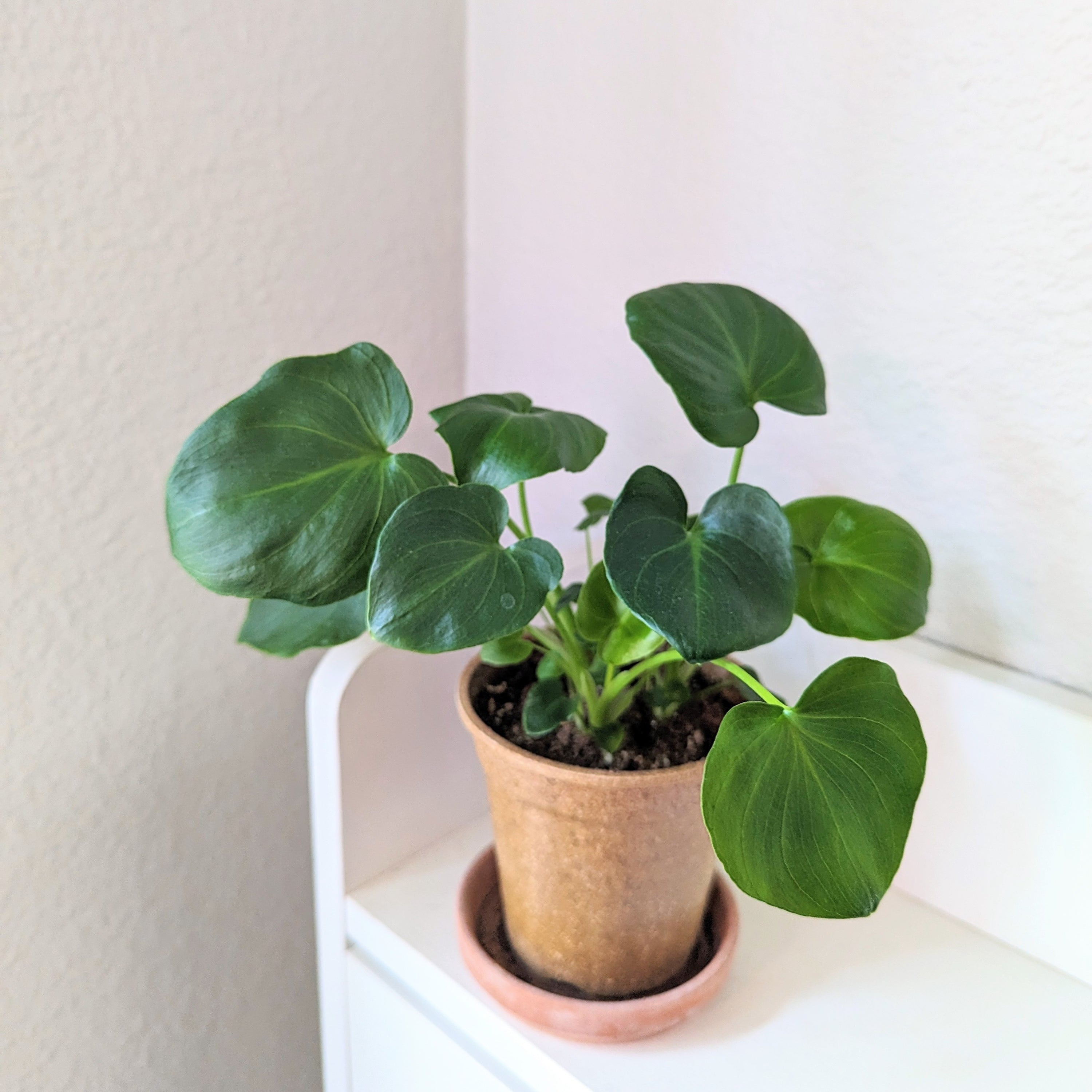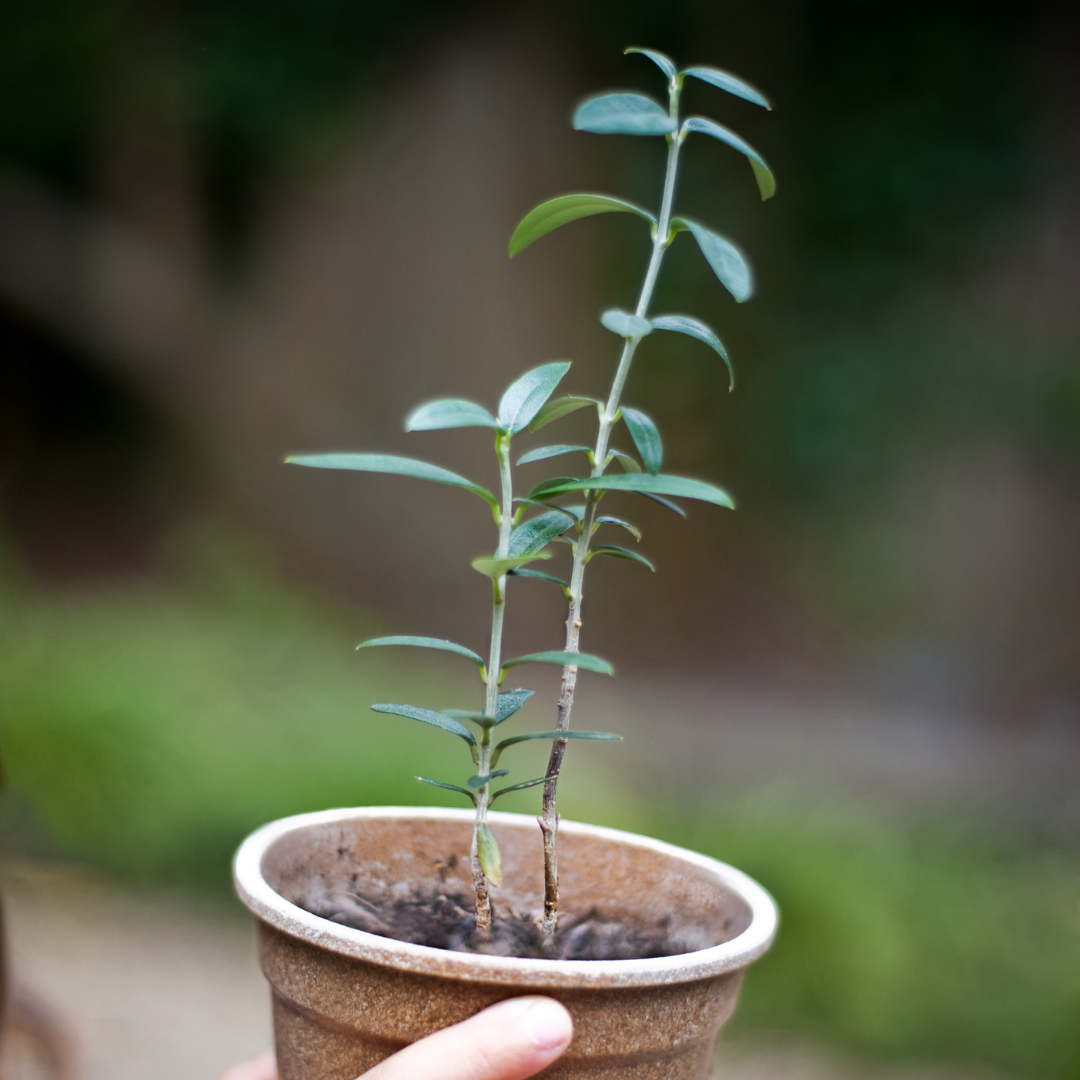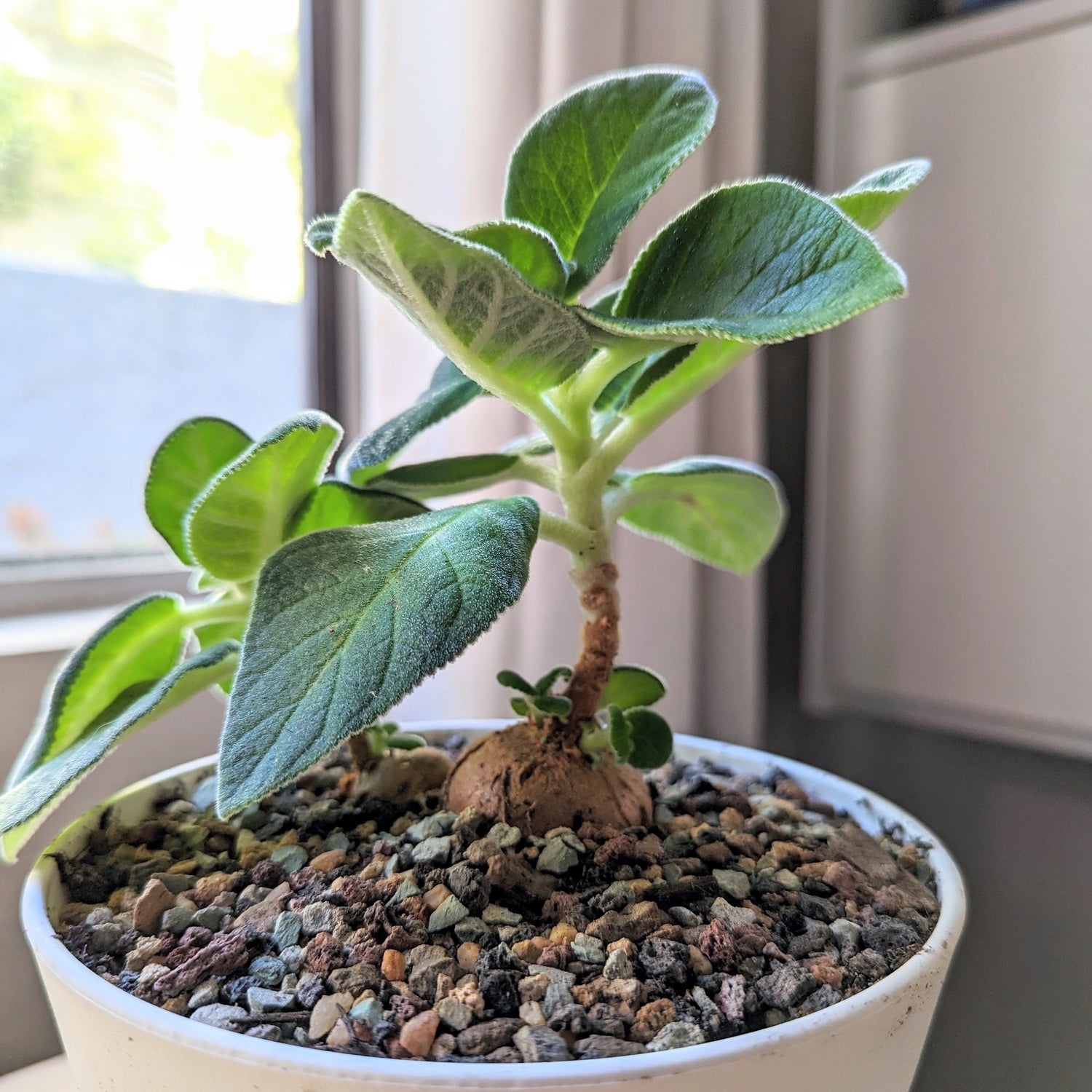Houseplants typically require bright indirect light, but what kind of light should seeds and/or seedlings have?
First off, it's important to establish that seeds need different lighting than seedlings do. Most houseplant seeds don't require much light, if any, to germinate. The best thing to do is to keep them in a bright spot away from any direct sunlight, or under grow lights. A common misconception is to plant seeds and leave them in bright sun, which can work for many garden varieties, but not for most exotic seeds(which is what we're primarily focusing on in this post).
Seedlings, on the other hand, need good lighting to grow properly. While many houseplants can thrive away from any direct light source, seedlings need a good windowsill or some grow lights to provide the energy they need to grow! Moreover, they are sensitive to direct sun, more so than many adult plants are, so picking the right kind of bright spot is crucial.
Here's a breakdown of some typical choices:
Indoor Gardening:

When it comes to starting off houseplant seeds and growing out seedlings, indoor conditions are ideal.
North-facing window: A north-facing window will work great! These windows generally receive the least amount of direct sun but still offer plenty of bright indirect light.
Seedlings won't grow as quickly here, however, as they might by brighter spots.
To conclude: A north-facing window is the perfect window for seed starting, or for transitioning very young seedlings to brighter light(and of course, for adult houseplants).
East/West-facing window: These windows tend to get a couple of hours of either morning or afternoon sunlight, but otherwise mostly get bright indirect light. They are an amazing choice for growing tropical plants, because they are brighter than a north-facing window, but don't get so much sun that the foliage will burn and die off.
Still, be cautious if moving new seedlings to an east or west-facing window, much sure they're not getting blasted with too much sun to start(they can acclimate as they grow older), and that they're getting enough water!
To conclude: An east or west-facing window is a great option for growing out seedlings.

South-facing window: A south-facing window can be the best option, but it can also be detrimental. If you're lucky enough to have one of these windows, you're getting LOTS of direct sun in your home!

If you're moving seedlings to a south-facing window, just make sure to place them in a more filtered or shaded spot, or just a foot or two away from the windowsill, so the seedlings don't get the full blast of sunlight right away. Too much sun exposure can damage foliage and burn it, so acclimation to it is crucial! If done right, your plants will take off by a south-facing window and grow very quickly and beautifully!
Unfortunately we don't have a south-facing window of our own, but we see so many posts from you all via Instagram showcasing lovely collections of houseplant seedlings absolutely thriving by a south-facing window!
To conclude: A south-facing window is amazing for older seedlings with a few leaves that have been acclimated to higher light. Even so, it's generally best to filter the light from a south-facing window or to place the seedlings a little further back from the window so the leaves don't burn.
Grow lights: The safest option. You can use grow lights as a supplementary light source by a windowsill that doesn't get too much light, or just on a grow light shelf.
I generally prefer full-spectrum grow lights, but the most critical wavelengths are red and blue for seedling growth. Since houseplants have lower light demands, you don't generally need to get anything too fancy or powerful, and a basic $20 grow light can work perfectly well!
I personally don't have the budget to get the very fancy grow lights and grow almost everything with cheaper grow lights I find on amazon, however we did manage to get a couple of >$150 grow lights and the houseplant seedlings absolutely love those lights and grow so much more quickly!
Looking for some good grow lights? Check out these grow lamps and grow bulbs!
To conclude: Use grow lights when you have the option to! They are consistent, and can work well on their own or as a supplement to a windowsill garden.
Outdoor Gardening:
Growing your houseplants outdoors is doable, and here in San Diego I've even germinated and grown several houseplants from seed in our patio during the warmer months when I ran out of space indoors.
You're at a higher risk for pests, but there's just nothing like natural light and conditions when it comes to growing houseplants! The key thing is to make sure you're in a shadier spot(we have a north-facing patio), and that the temperatures never fall below 60F or so.

That being said, if you're growing houseplant varieties that do enjoy some extra sunlight, namely succulents(like the Desert Rose in the photo!), palms, cycads, or trees, then acclimating seedlings to growing outdoors is definitely something to try when it's warm outdoors! Most of these indoor varieties love getting as much sun as possible in the growing season, when they actually do some substantial growing. Then once the cooler temperatures set in, bring the plants indoors so they don't freeze and they will generally do fine indoors with windowsill light or grow lights until the next growing season.
I hope this little guide cleared up any confusion you may have had about different types of houseplant seedling lighting! If you have any other questions, please let me know and leave a comment to let me know what worked best for you :)
If you enjoyed this post, check out some other ones I wrote!






1 comment
So helpful because I am so used to only growing seedlings like peppers, tomatoes and sun loving stuff that goes outside. Just started dabbling with growing houseplants from seed this year. I quickly realized that my houseplant seedlings weren’t loving the same grow lights that the peppers and tomatoes love once they were established! This is such a helpful guide :)